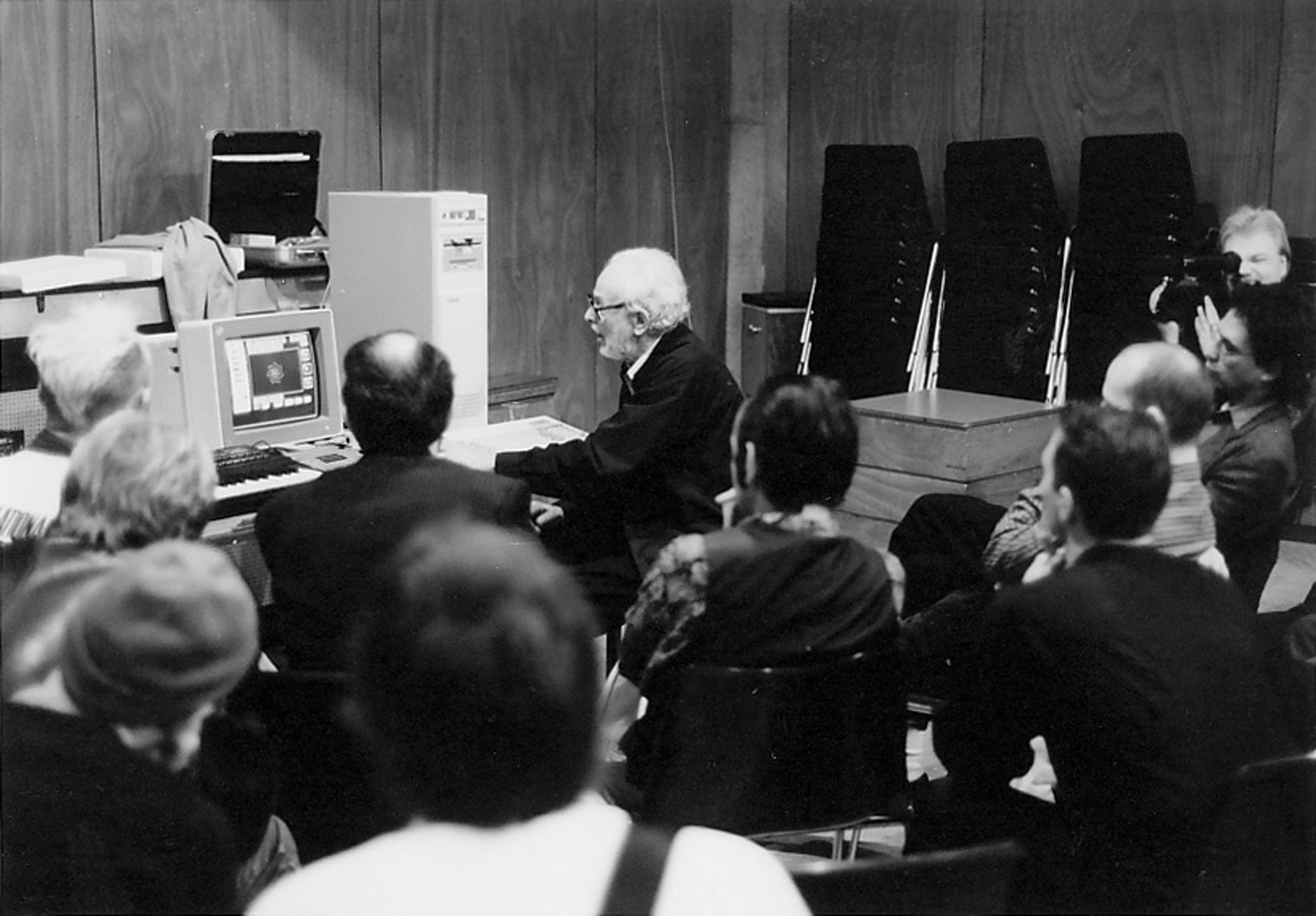“Some Comments on the Visible Shape of Time for Television and Future Media, A Theoretical Quest” presented by Whitney Sr.
Symposium:
Presentation Title:
- Some Comments on the Visible Shape of Time for Television and Future Media, A Theoretical Quest
Presenter(s):
Venue(s):
Abstract:
A counterpoint is developing which offers a special complementarity of relationship between musical and visual design. This counterpoint is composed by computer algorithms. I would define such algorithms as the routines of computer instructions that play out color design and/or music through solid state memory in time, as an event in time. These algorithms are a performance that could never be performed.
I search for a more appropriate word than algorithm or performance. In concert, we hear an artist’s performance which later may be re-enacted over and over on a laser disc recording. Each time we play the CD, more or less, we relive that original performance. I need a proper word for my own compositions which were never performed, but are still a recording which indeed relives my creative choices and temporal options. I offer you my composition, or my set of algorithms, or my recording, or whatever. It must play to you from some form of solid state memory. I’m the composer and performer of this music yet it was never really performed.
Musicians of course resist the idea of non-performing music, believing each detail in musical art demands a precious and exclusive effort from a performer. How right they are — the vitality of all music we have ever known is expressed in acts of performing. Regardless of this perception, however, I refer to an altogether different kind of music. And I must ask: is this new music possible today? Will fast computers allow a genuine musical art that belongs to TV? Will digital visual and audio capabilities permit an art as pure and popular as the diverse artistic musical traditions around the world? in other words, can we find yet another art form able to match our lively musical past?
No doubt with suitable talent we’ll invent a new music. It’s been done before. Formal pattern interrelations can be composed with algorithmic software today much the way composers created new music in the past employing technologies of their own time. More to the point of these remarks, however, is the idea that there are computer powers promoting a counterpoint h music which involves visual structures possessing the broad temporal architecture of music.





